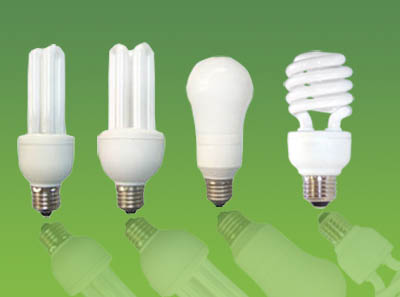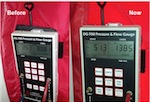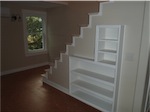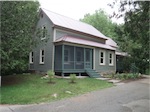The US Department of Energy’s energy efficiency regulation to phase out the incandescent light bulbs reached its last milestone with the turn of the new year. As of Jan 1, 2014, the 40W and 60W bulbs are no longer allowed to be produced in the US (the 100W bulb and the 75W bulb were discontinued in 2012 and 2013 respectively). It is expected that these bulbs will not be available on stores shelves sometime in 2014 when inventories run out.
The incandescent bulb that has been serving us since Thomas Edison invented it over 100 years ago will finally replaced by newer technologies that can deliver much better energy efficiency. This is significant since lighting constitutes about 1/3 of household electricity use.
The most common lighting technologies replacing the incandescent lights are: Compact Fluorescent (CFL) and Light Emitting Diode (LED). Here is a brief comparison between the two.
CFL
- Pro. They are inexpensive – $1-2 apiece and simple to replace and will last over 5000 hours. CFLs use only 1/4 of the energy as incandescent bulbs for the same light output.
- Con. Lower quality bulbs come up to full lighting intensity slowly, which can be a minor nuisance. However, the better quality ones can do that in seconds.
- Other Considerations. When CFLs first came to the market over a decade ago, there were lots of complaint about the light color being too cold. Nowadays, you can easily buy CFLs that produce the same warm color that we all are used to. There were concerns about the amount of mercury used in manufacturing CLF bulbs. Over the years, mercury has been reduced to such a miniscule level that it is no longer a concern. However, used CLF bulbs should still be disposed of properly, similarly to other fluorescent lights. Some dimming bulbs may require dimmers different from the ones used by incandescent bulbs. See Dimmers and Energy Efficient Lighting.
LED
- Pro. LEDs are very energy efficient, about 1/5 as much as incandescent bulbs for the same light output. They last over 25,000 hours – that is over 12 years of normal use. LEDs also come to full lighting instantly.
- Con. They are still relatively expensive – about $10 apiece for the 800-lumen* or 500-lumen bulbs. Higher output (1600-lumen) bulbs are more expensive. Prices have been coming down and we expect the trend to continue, eventually making them close to parity with CFLs.
- Other Considerations. The really exciting thing about LED technology is that it is not just a replacement of the screw-in incandescent bulbs. Rather, it offers much more lighting control, including better dimming, changes in color. LED’s can also be fashioned into various lamp shapes and sizes to suit different applications and even for fun. Since there is electronics in the bulbs, they must be disposed of properly after their useful life. Similar to CLFs, some dimming bulbs may require dimmers different from the ones used by incandescent bulbs.
One important point to keep in mind is that most household light fixtures were designed for incandescent light bulbs. CFLs and LEDs have different behavior, particular in where and how heat gets dissipated. When you plan to replace an incandescent bulb by a CFL or LED bulb, make sure you check the CFL and LED package to understand where the bulb can be placed.
Some other LED lighting ideas are shown in images below.
_____________
* Lumen is a measure of the amount of light produced by a light source. On average, a 100W incandescent bulb produces 1600 lumens, 60W bulb 800 lumens, 40W bulb 500 lumens.








